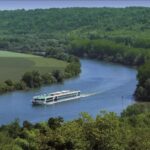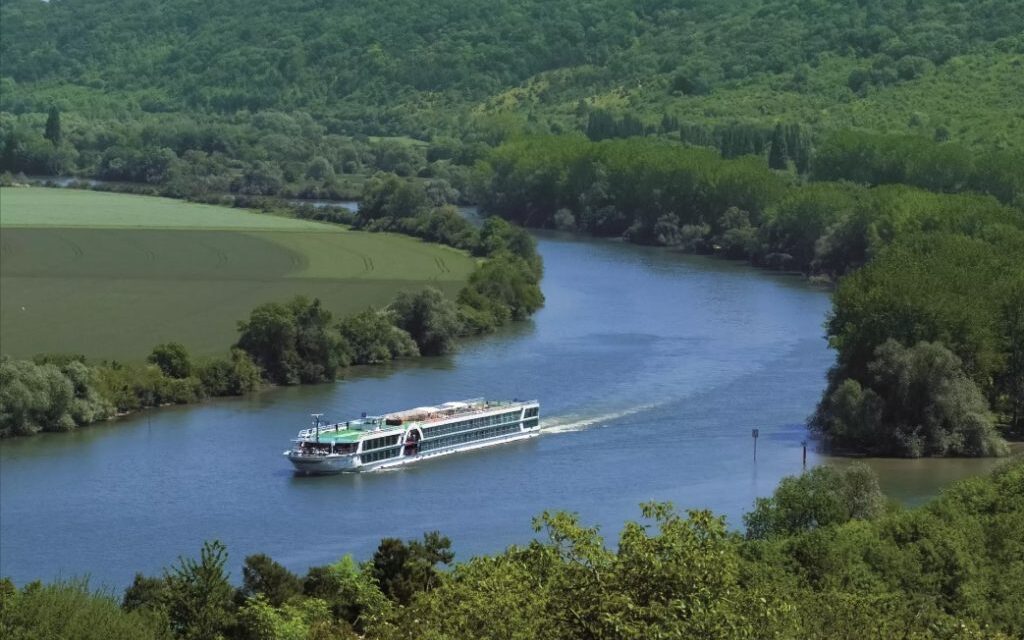 June to August 2024 marks the 80th anniversary of the Battle of Normandy – the campaign planned to liberate Franze from Nazi occupation. Commencing with the D-Day landings on 6 June 1944, Operation Overlord was the largest amphibious assault in history, beginning the march eastward to defeat Germany.
June to August 2024 marks the 80th anniversary of the Battle of Normandy – the campaign planned to liberate Franze from Nazi occupation. Commencing with the D-Day landings on 6 June 1944, Operation Overlord was the largest amphibious assault in history, beginning the march eastward to defeat Germany.
To commemorate the 80th anniversary of the Battle of Normandy and D-Day landings in 2024, Mat McLachlan Battlefield Tours has designed a special group tour, comprising 8-days of river cruising along the Seine aboard the luxurious five-star AMADEUS Diamond from Paris to Normandy and return, three on-board WW2 seminars during the cruise, two days of comprehensive touring exploring Normandy and the D-Day landing sites in the company of an expert WW2 Historian, and more.
All meals are included, with gourmet dining aboard AMADEUS Diamond including a continental breakfast buffet, multi-course lunch, and 4-5 course dinner, as well as afternoon tea and late-night snack. Free-flowing hand-selected wines are included at every lunch and dinner aboard AMADEUS Diamond, as well as beer and soft drinks – and complimentary coffee and tea are available on-board 24/7. A Welcome and Farewell Cocktail Reception are included, free on-board WiFi and guests have complimentary use of on-board bicycles to explore ashore.
Historian and founder of Mat McLachlan Battlefield Tours, Mat McLachlan, said: “The D-Day landings in Normandy, France during WW2 were part of the largest seaborne attack in history. They involved 7000 Allied warships, vessels and landing craft manned by over 195,000 naval personnel from eight allied countries, as well as an airborne attack, designed to land around 150,000 Allied troops on five different beachheads.”
“Around 3,300 Australians served in the D-Day landings, mostly in the Airforce, but also at sea and on land, and the 80th anniversary of D-Day and the Battle of Normandy is a very important anniversary to reflect on the significance of this campaign, as well as to remember the servicepeople involved.”
Mat McLachlan Battlefield Tours 80th Anniversary of the Battle of Normandy & D-Day River Cruise group will spend two full days exploring the American and British Sectors of the D-Day landing beaches, including: Point du Hoc – an elevated vantage where huge German guns were stationed, the edge of the famous Norman ‘bocage’ which proved such an obstacle to the Allied troops, Omaha Beach – the bloodiest landing site on D-Day, the huge American Cemetery at Colleville-sur-Mer, Arromanches – the beach where the Allied established an artificial harbour to unload heavy equipment, Longues Gun Battery, Gold Beach – the centre beach of the five landings areas, Pegusus Bridge – scene of the successful coup de main to capture Pegasus and Horsa bridges, and the Commonwealth Cemetery.
Within a few days of the D-Day landings on 6 June 1944, over 320,000 troops, more than 50,000 vehicles and some 100,000 tonnes of equipment had been landed, and in the weeks that followed the Allied forces fought hard and gained significant ground. By August 1944, all of northern France had been liberated.

Historian Mat McLachlan shares some of the D-Day Anzacs stories:
Lieutenant Kenneth Hudspeth, Royal Australian Naval Volunteer Reserve (RANVR), a teacher from Hobart, Tasmania, commanded one of the first two ‘X’ class submarines (the X20) to cross the Channel for the landings, his mission to mark the access route for the Allied Armada and act as a navigation beacon.
Lieutenant-Commander Leon Goldsworthy, Royal Australian Navy Volunteer Reserve, from Broken Hill NSW, was one of the bravest Australians at Normandy. He was part of a team of Royal Navy clearance divers who, just weeks after the D-Day landings, worked desperately to clear mines from the booby-trapped harbour near the port of Cherbourg.
Sub-Lieutenant Richard Pirrie, RANVR, from Hawthorn, Melbourne was a talented sportsman who had played AFL for Hawthorn Football Club. On June 6 – his 24th birthday – Pirrie was in command of Landing Craft Support (M)47 in the first wave at Juno Beach, Normandy. He was tasked with the dangerous job of piloting his craft close in, so a naval artillery observer could direct gunfire onto German defences. Pirrie’s craft simultaneously struck a mine and was hit by a shell, killing him and two others.
Lieutenant-Commander George Dixon, Royal Australian Navy Volunteer Reserve, from Tasmania, was in command of Landing Ship Tank 409 at Juno Beach on D-Day. Dixon was one of the original Anzacs among the first to land at Gallipoli on 25 April 1915 as part of the 12th Battalion Australian Infantry Forces – when he was just 15 years old.
21-year-old Flight Sergeant Stanley Black, from Melbourne, one of seven members of a Lancaster bomber crew of No. 106 Squadron, Royal Air Force, who was sent on a mission to help secure the Allied beachhead. His Lancaster was shot down by enemy fire and he bailed out, parachuting to safety and joined a group of American paratroopers holding the village of Graignes. A German SS division was approaching the village, and the Americans welcomed a friendly addition to their ranks. Outnumbered, the Americans and Black held Graignes for 24 hours, preventing the German advance toward the Allied beachheads. When the Germans finally entered Graignes on 11 June they rounded up and executed the remaining paratroopers, Flight Sergeant Black, two local priests and 40 villagers.




















